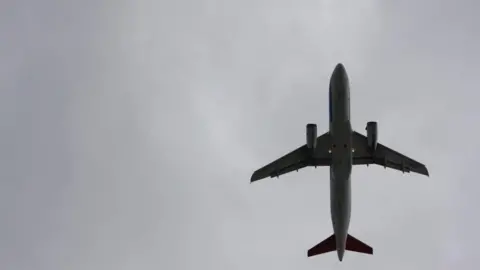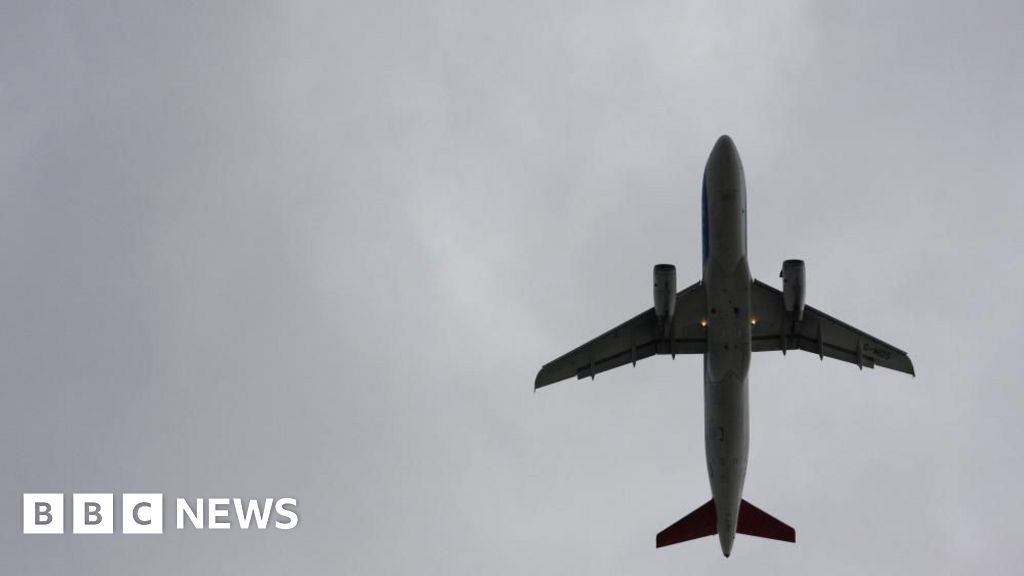 BBC
BBCWhat is turbulence and what causes it?
Frequent flyers will be familiar with the sudden jolting that can happen when an aircraft gets into turbulence. It can move the plane and cause sudden changes in height.
Most turbulence occurs in cloud where there are up- and downdrafts of wind, according to BBC Weather’s Simon King, a former RAF officer.
Much of that will be fairly mild, but in bigger clouds – such as the cumulonimbus thunderstorm cloud – the chaotic movements of air can cause moderate or even severe turbulence.
There’s another type of turbulence called “clear air” turbulence – which as the name suggests is cloudless and can’t be seen. This is much more problematic as it’s very difficult to detect.
This type of turbulence happens around the jet stream, a fast flowing “river” of air that’s typically found at 40,000-60,000ft, aviation academic and commercial pilot Guy Gratton says.
You can easily have 100mph speed difference between the air in the jet stream and the surrounding air, he says. The friction around the jet stream between the slower and faster air causes turbulence. This is always there and it moves, making it difficult to avoid.
If you are flying from Europe to North America, for example, it’s hard to completely avoid it, Mr Gratton says, and this can result in periods of severe turbulence.
How dangerous is turbulence?
Aircraft are designed to take the worst that turbulence can throw at them, says Mr Gratton, associate professor of aviation and the environment at Cranfield University.
It’s “unlikely” turbulence will ever destroy an aircraft, he adds.
Nonetheless, it doesn’t do an aircraft any good, which is why pilots try to avoid it or slow down – and turn the seatbelt sign on.
Experts say that in extreme scenarios, turbulence can cause structural damage to a plane because of how strong the winds can be.
Severe turbulence can be dangerous to air passengers because of the violent motion it can cause, which can throw anyone who is not wearing a seatbelt across the cabin.
But aviation safety experts say deaths and injuries resulting from turbulence remain rare.
John Strickland, an aviation expert, said injuries from severe turbulence were “relatively rare” in the context of the millions of flights that are operated.
The US’s National Transportation Safety Board said there were 163 “serious turbulence injuries” on US-based airlines between 2009 and 2022 – an average of about 12 per year.
How do pilots handle turbulence?
Pilots will get specific aviation forecasts before they fly, which will include meteorological data.
They will be able to study this information when planning their routes.
This means they should be able to avoid isolated thunderstorms, for example. But “clear air” turbulence is a little more tricky to avoid.
Other aircraft ahead of them on the same routes will also report any turbulence, Mr Gratton says.
Pilots will try to avoid these areas, or slow the plane down to lessen its impact.
Crews are also trained in how to respond to turbulence.
What can passengers do to stay safe?
For passengers, the advice is to stay strapped in and don’t have any heavy objects out.
Pilots advise passengers to be strapped in at all times, precisely because turbulence can be unpredictable.
Is turbulence becoming more frequent?
Some researchers think that climate change has made turbulence more likely.
Last year, scientists at Reading University in the UK found that severe turbulence had increased 55% between 1979 and 2020 on a typically busy North Atlantic route.
They put the increase down to changes in wind speed at high altitudes due to warmer air from carbon emissions.
Guy Gratton suggests that we are encountering turbulence more, adding that another reason for this may be the fact we are flying more.
This means the skies are busier, making a pilot’s decision in avoiding turbulence trickier as they have to maintain a safe minimum distance from other aircraft in the area.


